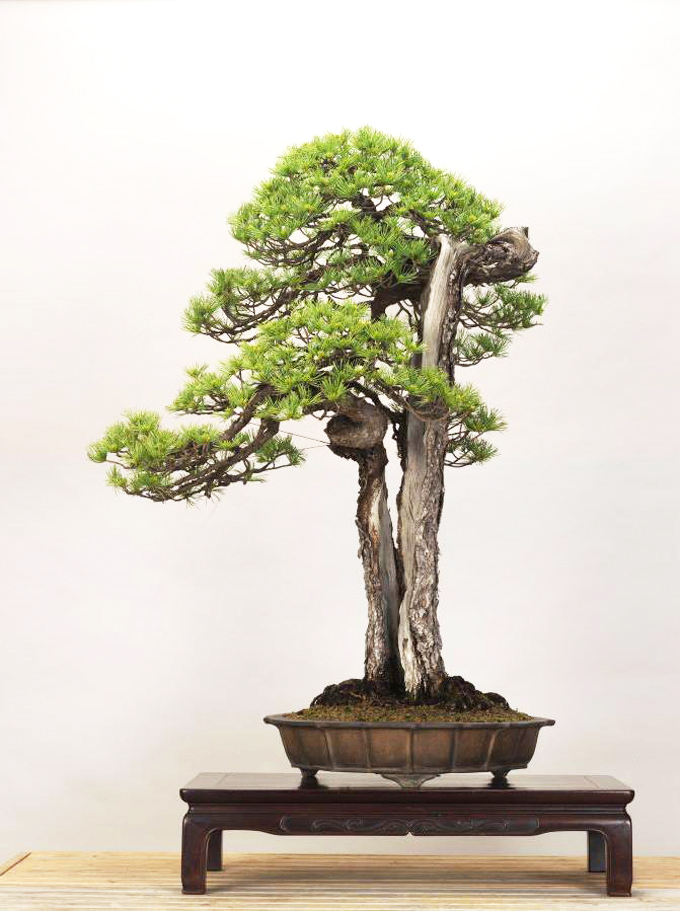 This distinctive Goyo-matsu (Japanese white pine) is from the Omiya Bonsai Art Museum. I don’t know if the split trunk was by the hand-of-man or the result of a natural occurrence. Either way, the twin trunk effect is wonderful. At the risk of stating the obvious, you might notice the similar movement and direction of the each trunk’s twists and turns.
This distinctive Goyo-matsu (Japanese white pine) is from the Omiya Bonsai Art Museum. I don’t know if the split trunk was by the hand-of-man or the result of a natural occurrence. Either way, the twin trunk effect is wonderful. At the risk of stating the obvious, you might notice the similar movement and direction of the each trunk’s twists and turns.
We’re digging back into our archives once again and we’re always looking for catchy titles, even when it’s a bit of a stretch. All the trees shown here are from two earlier Bark posts. The plus one in the title is the tree above. It’s still a Japanese white pine like the others, but it we featured it way back in 2011. The others are from a 2013 post titled Japanese Whites.
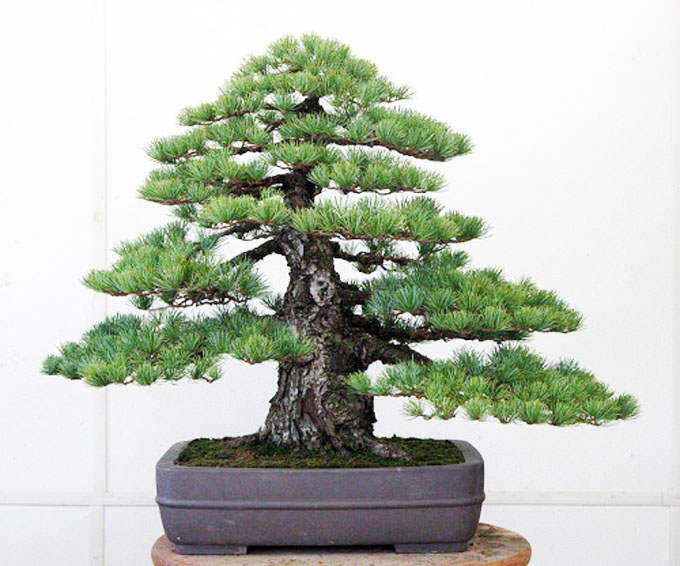 A seedling? Great base, strong taper and nice balanced open branching. An altogether excellent Japanese white pine and it’s from a seedling no less! As you may know, most quality Japanese white pine bonsai have been grafted onto Black pine stock (see below). But not this one. It was grown from seed and is, as you can see, quite impressive. It was just wired (in this photo) by Michael Hagedorn (Crataegus Bonsai.) It belongs to a client of Micheal’s.
A seedling? Great base, strong taper and nice balanced open branching. An altogether excellent Japanese white pine and it’s from a seedling no less! As you may know, most quality Japanese white pine bonsai have been grafted onto Black pine stock (see below). But not this one. It was grown from seed and is, as you can see, quite impressive. It was just wired (in this photo) by Michael Hagedorn (Crataegus Bonsai.) It belongs to a client of Micheal’s.
More than just another bonsai in our species specific series. The Japanese white pine (Pinus parviflora) is one of the world’s emblematic bonsai. In Japan it is one of the two most famous classical bonsai species (the other is the Japanese black pine) and that fame has spread so much that any serious bonsai display without at least one Japanese white pine might be said to be incomplete (climate permitting, of course).
What’s in a name? The Latin name for Japanese white pine (aka Japanese five needle pine) is Pinus parviflora. The Japanese name is Goyo Matsu. Matsu is pine, so you’d think that goyo might mean white or five needles, but my Japanese dictionary says that goyo means ‘business matters to attend to.’ Perhaps the business matter in this case is grafting onto Japanese black pine stock? Note after the fact: that was an attempt at a bad joke… though true, my grasp of Japanese is very weak and you might expect that I’d have known that “Goyo” means “five-needle” (see comment below), but…
Borrowed roots. Speaking of grafting, Japanese white pine bonsai, and as we’ve mentioned, they are usually grafted onto Japanese black pine stock, and though there must be people grafting them elsewhere, it seems that almost all of these grafts come from Japan. The reason for grafting is mostly because black pines are so much more vigorous than the more delicate and finicky Japanese whites. This is especially true of White pine cultivars, many of which simply won’t thrive on their own roots (here’s more if you are interested).
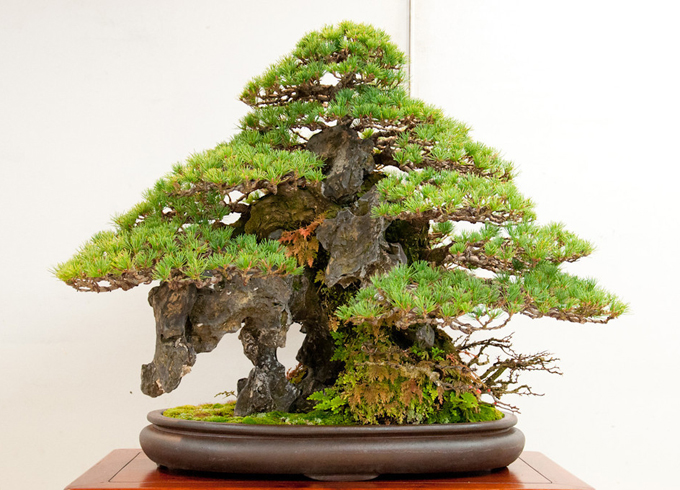 Root-on-rock Japanese white pines are not at all unusual. The more I look at this one, the more I am struck with just how well-balanced and tranquil it seems. This is to take nothing away from its natural and wild side. The photo was taken in Japan at the 2011 Sakufu-ten exhibition by Jonas Dupuich (Bonsai Tonight).
Root-on-rock Japanese white pines are not at all unusual. The more I look at this one, the more I am struck with just how well-balanced and tranquil it seems. This is to take nothing away from its natural and wild side. The photo was taken in Japan at the 2011 Sakufu-ten exhibition by Jonas Dupuich (Bonsai Tonight).
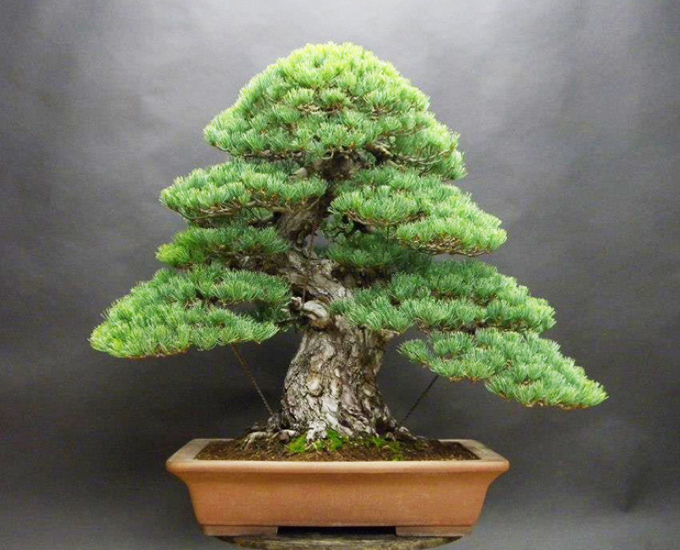 Fluidity and muscle combined make for a very strong bonsai. To my eyes this is a near perfect classical informal upright Japanese white pine bonsai. It’s from Mario Komsta’s facebook photos. My guess is that it originated in Japan and that Mario has been refining it. He calls it Goyo Kundo and though Goyo matsu is the Japanese name for Japanese white pine (see above), I couldn’t find anything about Kundo in my dictionary or online, so your guess is as good as mine. I’m going to assume that this tree, like almost all powerful Japanese white pine bonsai, originated in Japan and is grafted onto Japanese black pine stock.
Fluidity and muscle combined make for a very strong bonsai. To my eyes this is a near perfect classical informal upright Japanese white pine bonsai. It’s from Mario Komsta’s facebook photos. My guess is that it originated in Japan and that Mario has been refining it. He calls it Goyo Kundo and though Goyo matsu is the Japanese name for Japanese white pine (see above), I couldn’t find anything about Kundo in my dictionary or online, so your guess is as good as mine. I’m going to assume that this tree, like almost all powerful Japanese white pine bonsai, originated in Japan and is grafted onto Japanese black pine stock.
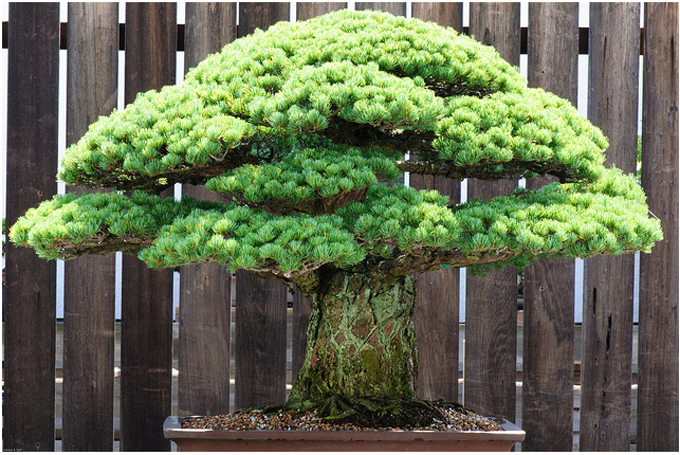 The most famous pine in North America? I like the way this photo captures the lines and color in the bark of this famous tree. That’s the upside. The downside is that there’s no way to tell just how large and powerful this tree is. In fact, it would be easy to think that it’s not very big at all. It resides at the National Bonsai and Penjing Museum and like a couple others trees shown in this post, we’ve featured it before (actually a couple times). The photo is from Michael Bonsai.
The most famous pine in North America? I like the way this photo captures the lines and color in the bark of this famous tree. That’s the upside. The downside is that there’s no way to tell just how large and powerful this tree is. In fact, it would be easy to think that it’s not very big at all. It resides at the National Bonsai and Penjing Museum and like a couple others trees shown in this post, we’ve featured it before (actually a couple times). The photo is from Michael Bonsai.
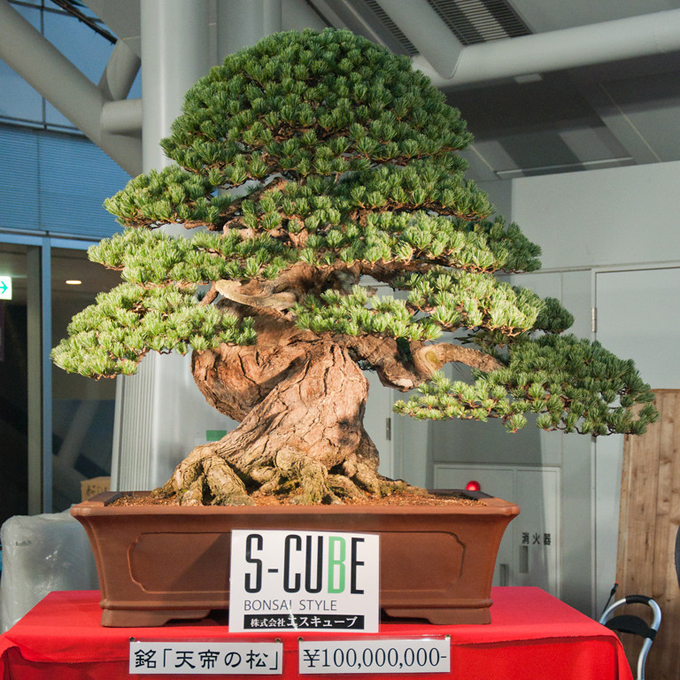 Million dollar bonsai. Here’s a mind-bending Japanese white pine that we featured back in 2011 with our original caption: This magnificent White pine was sold at the 11th Asia-Pacific Bonsai and Suiseki Convention & Exhibition in at Takamatsu, Kagawa, Japan, earlier this month. As you can see, the asking price was 100,000,000 yen (that’s close to 1.3 million dollars). I don’t know what the actual sales price was. Photo borrowed from Bonsai Tonight.
Million dollar bonsai. Here’s a mind-bending Japanese white pine that we featured back in 2011 with our original caption: This magnificent White pine was sold at the 11th Asia-Pacific Bonsai and Suiseki Convention & Exhibition in at Takamatsu, Kagawa, Japan, earlier this month. As you can see, the asking price was 100,000,000 yen (that’s close to 1.3 million dollars). I don’t know what the actual sales price was. Photo borrowed from Bonsai Tonight.
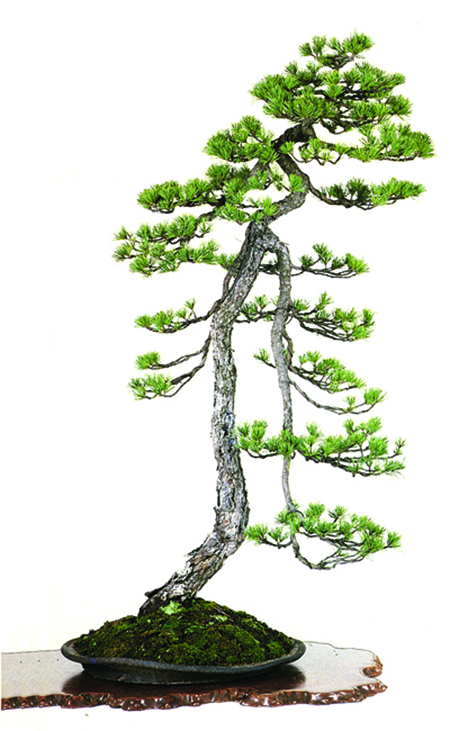 This flowing bunjin Japanese white pine provides a little contrast to the husky fellow immediately above. It’s from our Masters’ Series Pines: Growing and Styling Japanese Black and White Pines (just below).
This flowing bunjin Japanese white pine provides a little contrast to the husky fellow immediately above. It’s from our Masters’ Series Pines: Growing and Styling Japanese Black and White Pines (just below).
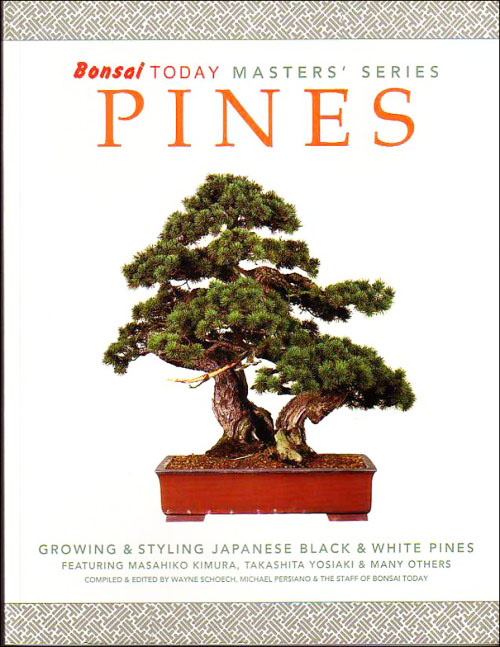 A word from our sponsor. If you’d like to do your own Japanese white pines, you’ll do very well to consult with our famous pine book. Among other things, it contains some of the best how-to instruction anywhere. Great photos too.
A word from our sponsor. If you’d like to do your own Japanese white pines, you’ll do very well to consult with our famous pine book. Among other things, it contains some of the best how-to instruction anywhere. Great photos too.
That twin-trunk you started with is a masterpiece of design! It’s one of those trees that says, “Look! Look! Here’s what you can aim for!” And even if we don’t match it, our trees are so much better for the trying.
As for the splendid white pine in the National Collection, I saw it in the early 80’s. The trunk was almost as thick as my thigh. (I’m 6’1″.)
Hi There
What was the age of the white pine?
John
Hi John, if you were asking about the huge old White pine in the photo taken at the ASPAC convention in Takamatsu in 2011, I saw this bonsai in the flesh so to speak. I recovered the following info from my travel diary but can’t recall who gave me the details but I think it might have been the learned Bill Valavanis.
The tree is a grafted Miyajima Japanese five-needle pine which had not been on display since the 1940s. It is approximately 300 years old. Seiji Morimae (S-Cube) sold the tree.
The bonsai was sold to a private collector from Fukushima Prefecture. The tree was in the sales area and was displayed high up looking down on we poor mortals below. It was truly impressive. Similarly, I was impressed with a Japanese Black pine, a tree that had survived the A-Bombing of Hiroshima – this special tree was on display at the Taikan-ten in Kyoto the week after ASPAC. Two clear memories of wonderful bonsai seen on my trip.
Back in the 1970’s I visited the National Arboretum because a friend had just started working there. I viewed the bonsai collection and was absolutely stunned by the power and emotion projected by that white pine.
Hi Frank
Thanks for letting me know the age, I saw it somewhere & couldn’t remember.
I read that the Black Pine was up against a wall or a structure, this is what saved it.
Regards
John